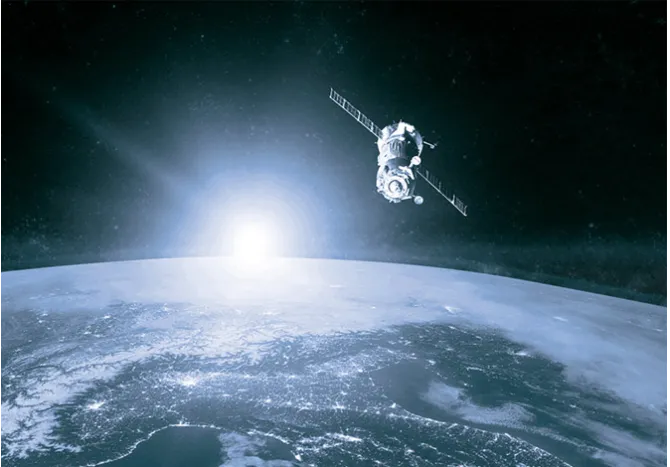
Complex global security concerns, exemplified by events like the Hamas attacks on Israel raise security demands for a robust C4ISR (Command, Control, Communications, Computers, Intelligence, Surveillance, and Reconnaissance) network as a backbone, facilitating real-time intelligence and decision-making. To address these challenges, space-based assets have emerged as indispensable tools, providing invaluable capabilities for secure military operations. Simultaneously, India's nascent but burgeoning private sector space players represent a dynamic force inching to contribute to the nation's defence needs, making it a pivotal player in the unfolding space security strategy. The framework for this strategy not only encompasses technical aspects but also requires a well-coordinated, whole-of-nation approach, bringing together civil, defence, industry, academia, and think tanks to ensure India's space security is comprehensive and resilient.
India's nascent but burgeoning private sector space players represent a dynamic force inching to contribute to the nation's defence needs, making it a pivotal player in the unfolding space security strategy.
National Space Security Policy
In the complex landscape of space operations and formulation of a clear national security perspective for space utilisation, it is vital to clarify and differentiate between two seemingly similar yet fundamentally distinct terms: “militarisation” and “weaponisation” of space. These terms often cause confusion and impact the approach of various forums when discussing the use of space for defence purposes. Militarisation refers to the deployment and utilisation of space-based assets in support of non-aggressive, peacekeeping, or defensive military operations. Importantly, it does not involve the deployment of weapons in space for offensive actions. Weaponisation, on the other hand, involves the use of space assets specifically designed for offensive measures, including the deployment of weapons such as anti-satellite (ASAT) missiles, directed energy weapons (DEW), or other counter-space weapons. It represents a more aggressive posture, with the potential to turn space into a battleground. Understanding the difference between these two terms is essential as one goes about formulating space laws and policies that enhance space security. This has prompted space support measures for enhancing combat readiness, and counter-space measures for safeguarding our assets, thereby accentuating the need for a robust National Space Security Policy.
The National Space Security Policy will play a pivotal role in shaping India’s stance on secure and peaceful space utilisation for national security while underscoring the commitment to avoid the first initiation of force in space. Formulation of this policy will necessitate redefining the strategic security framework and concept of operations to yield the desired results for strategic applications of space. It lays the groundwork for a coordinated and effective approach to space activities that are critical for India's defence and maintaining harmony and peaceful coexistence in the realms of outer space.
Militarisation refers to the deployment and utilisation of space-based assets in support of non-aggressive, peacekeeping, or defensive military operations. Importantly, it does not involve the deployment of weapons in space for offensive actions.
The Indian Space Policy unveiled on 20 April 2023, elaborates plans for end-to-end commercial space activities by private enterprises, from launching satellites and rockets into space to operating ground stations. However, the Indian Space Policy does not cover space security aspects exclusively tailored for defence applications. The National Space Security Policy will redefine the nation's approach to peaceful space utilisation with unambiguous and firm security considerations. Enhancing India’s defence space preparedness will subsequently necessitate bolstering space security policy with defence space doctrine and strategy. In times of crisis, seamless coordination among various stakeholders of space is essential, and this coordination can be achieved through the Union War Book[i][ii], which should clearly define the roles and responsibilities of various civil-defence space players.
Navigating the dual dilemma
The next pertinent question in the formulation of the policy is, “tagging of satellites as military, civil or dual-use”. The complexity involved in tagging satellites accordingly is a global challenge, and India should navigate this complexity by prioritising dual-use satellites, building consensus, and maintaining a transparent and adaptive approach to space policy. This approach will help India leverage advantages and flexibility while contributing to a more stable and peaceful space environment.
Space is a strategic and limited resource, and its judicious national utilisation must reflect this status. The notion of restricting ownership of space-based assets for the exclusive use of specific organisations ultimately places all users at a disadvantage. India's current economic climate, characterised by unwavering efforts in nation-building, does not permit the luxury of selective use of space-based assets in departmental silos. Therefore, the concept of segregation and classification of space assets as civil and defence assets results in a suboptimal and detrimental approach.
The complexity involved in tagging satellites accordingly is a global challenge, and India should navigate this complexity by prioritising dual-use satellites, building consensus, and maintaining a transparent and adaptive approach to space policy.
Consider this scenario: 10 satellites with similar payloads individually used by 10 different organisations in sun-synchronous polar orbit (SSPO) result in revisit times exceeding a week. However, when the same fleet is utilised collaboratively by all users, the revisit time can be reduced to hourly intervals, amplifying the potential manifold.
The advantages offered by dual-use space assets are not confined to military applications alone; they also positively impact the economy by concurrently meeting the requirements of both civil and commercial sectors.
Roadmaps: Ownership and management
The basic operational necessity of any space user can be categorised as customised quality end-product and timely delivery. While the former lies in the domain of research to craft a suitable payload, the latter demands a quantitative enhancement, thereby improving the revisit timings. Therefore, ISRO should continue research yielding futuristic technology and handover the same to private players once matured, for cyclostyling. Targeted research to meet space defence gaps needs to be adopted by the Defence Research and Development Organisation (DRDO) on the double, which might need initial handholding from veteran ISRO technocrats.
Planning the ownership and management of space infrastructure warrants careful consideration. The gestation periods for space assets are protracted, often taking decades to achieve full operational effectiveness. Therefore, a multi-service provider approach is ideally suited to meet the multi-user needs of a country with such vast human resources and security conundrums. Incorporating dual or multi-functional satellite fleets can significantly reduce gestation periods and quantitative gaps. A model consisting of government-private collaboration in a 30:70 ratio forms a robust setup, ensuring critical consistency and economy as well. The burgeoning private space sector in India is dynamic, proactive, and enthusiastic. All it requires to achieve self-reliance is a well-defined policy framework to establish an assembly line for niche satellite productions. A vital aspect of this concept is to channelise industry into their niche proficiency to avoid duplication and waste of effort. The Indian Space Association (ISpA) and NewSpace India Limited (NSIL) together may need to take on this task and bind the industrial talent and resources in specified domains, accruing optimal employment and utilisation.
The gestation periods for space assets are protracted, often taking decades to achieve full operational effectiveness.
To ensure secure delivery of the end product for the strategic community, algorithms governing these systems need to feature multiple encryption layers, meticulously crafted by subject matter expert government organisations. It guarantees a wide range of operational flexibility in the utilisation of privately-owned and sustained satellite networks, effectively meeting all strategic requirements. It is crucial that while highly secure customised ground and user segment infrastructure is owned by the users themselves; encrypted high-value finished products are delivered by private space players equipped with artificial intelligence and integrated tools to cater to the tailor-made requirements of strategic users.
Recommended architecture
To fortify India's national defence capabilities in space, the architectural review of the Space Commission, comprising representatives from all stakeholders responsible for planning, designing, developing, executing, and sustaining strategic space requirements from a national security perspective, is essential.
At present, various organisations, both civil and defence handle the role of planning, design, development, and execution independently in a fragmented manner, often with limited and ambiguous responsibilities, resulting in a disjointed national approach. To holistically develop space for national security, CDS must form part of the Space Commission and facilitate lateral and vertical linkages with all civil-defence space stakeholders. This approach streamlines efforts, reduces redundancies, and ensures a unified and coordinated national approach to scalability and standardisation in space. To bolster the effectiveness of holistic defence operations based on space technology, there is an emergent and immediate need to evolve space functional units and subsequently expand the Defence Space Agency (DSA) into the Indian Defence Space Command (INDSPAC).
To holistically develop space for national security, CDS must form part of the Space Commission and facilitate lateral and vertical linkages with all civil-defence space stakeholders.
Conclusion
India's venture into space security, intertwined with defence readiness, necessitates a comprehensive and well-structured national strategy. This strategy should leverage a holistic national approach integrating space for strategic, civil, and commercial purposes. Taking cues from other leading space-faring nations, India must accrue benefits from close collaboration between industry and defence to customise tailored solutions for military needs. Regular and inclusive interactions of defence with industry, academia, think tanks, space domain experts, and friendly foreign countries will result in shaping and executing the long-term national space roadmaps in a timebound manner. A reappraisal of the space budget for integrated use, civil-defence space architecture coupled with defence space research will yield the desired impetus to the overall national security matrix.
Colonel Balak Singh Verma, VSM, is an Army Air Defence officer, commissioned into a Schilka regiment in 1997 from IMA. He is presently undergoing a Research Fellowship in the space domain with the Observer Research Foundation.
[i] The Union War Book of India is a document outlining the response and functions of the government during war. States also have their state war books.
The views expressed above belong to the author(s). ORF research and analyses now available on Telegram! Click here to access our curated content — blogs, longforms and interviews.




 PREV
PREV


